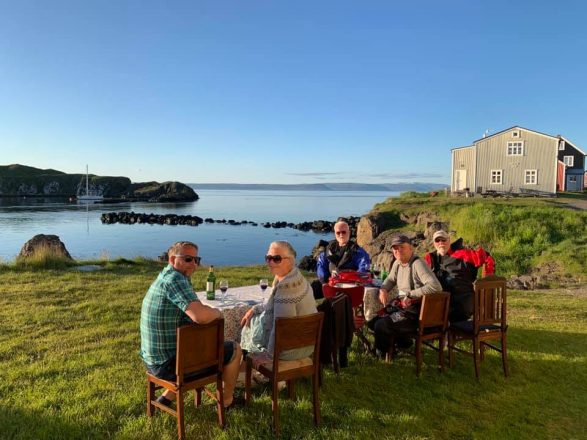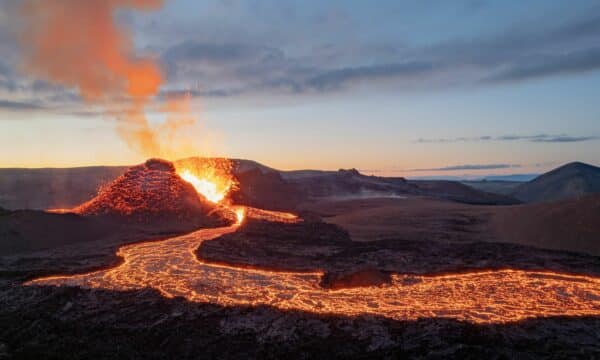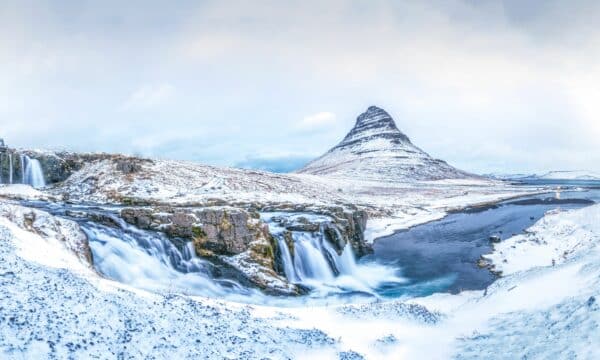Arriving to Flatey Island
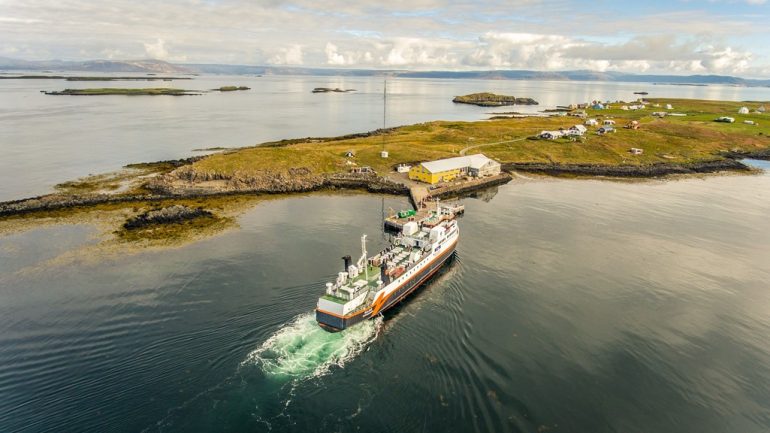
For mainland residents, Flatey island has long-promised national authenticity, solitude and free-roaming nature.
When it comes to attractions, however, I had been told it was best to expect only modest offerings, so as to avoid later disappointment.
- Don’t miss out on this fantastic 7-Day Winter Self-Drive Tour of the South Coast and Snæfellsnes Peninsula
Aside from nature itself, a solitary white church counts as this tiny island’s main point of interest, and one can only stare at 18th architecture for so long, after all.
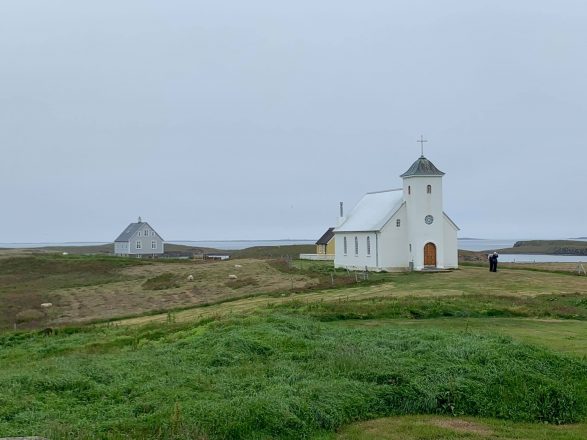
Those looking to include a visit as part of their Iceland itinerary can reach Flatey by taking the Baldur ferry between Stykkishólmur in the Snæfellsnes Peninsula and Brjánslækur town in the Westfjords.
On my own ride over, I was restless to arrive and hungry to uncover more, all while speculating on the mysterious qualities Flatey must possess to have such a grip over the wider Icelandic populace.
I decided to sit on the top deck, allowing the rolling blue waves of Breiðafjörður to distract me. This simple decision had come recommended before leaving; whales and dolphins are commonly spotted during these twice-daily trips.
- Planning on visiting the land of ice and fire? Check out these amazing summer tours in Iceland.
Lucky passengers could spot any number of species, including Humpback whales, Harbour porpoises and even Orcas.
Atlantic Puffins on Flatey Island

Unfortunately, there were no cetaceans to be seen on my two-and-a-half-hour journey, but that’s not to say Mother Nature didn’t make herself known in other ways.
Bobbing placidly atop the ocean, I knew at once that I was looking upon one of the country’s most iconic residents; Atlantic Puffins. I first spotted them when we were about twenty minutes off the island, checking one item from the bucket list before having even arrived.
- Make sure to read The First Day of Summer in Iceland to find out more about the season.
Puffins arrive on Flatey to nest and breed each summer. It is one of many places in Iceland where this species can be seen.
With their vibrant bills and tuxedo feathering, puffins are nicknamed ‘Sea Parrots’ and spend most of their lives alone out on the open ocean.
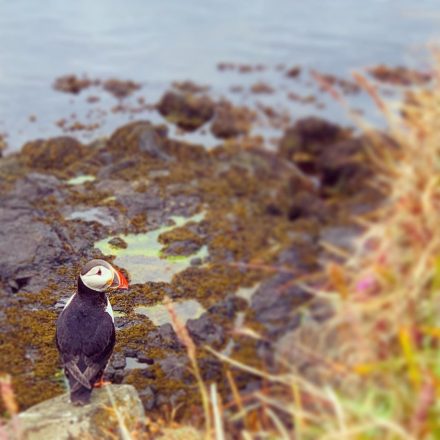
Iceland boasts the largest puffin colony in the world, in the Westman Islands, though you would be hard-pressed to believe it given the great number Flatey attracts each year.
Later in my trip, I found it possible to capture great photographs of these delightful birds by keeping flat to the grass and a sensible distance from the cliff edge.
- Learn more in our feature length article Puffins in Iceland
Despite having personally used a camera phone, true bird lovers should come equipped with a high-power body and telephoto lens to ensure the best snaps.

Puffins make up just one of the 30 bird species that call the island home. Summer visitors will quickly become accustomed to the Arctic Terns, who are fiercely protective of their nests, dive-bombing unsuspecting visitors with startling commitment.
- See our range of Whale Watching and Puffin Tours in Iceland
Running from one place to the next so as to avoid a pecked head, one can’t help but wonder why these birds don’t build their nests a little further from human habitation, only to be reminded by that nagging thought; Flatey is not really our island, but theirs.
Culture and History of Flatey Island
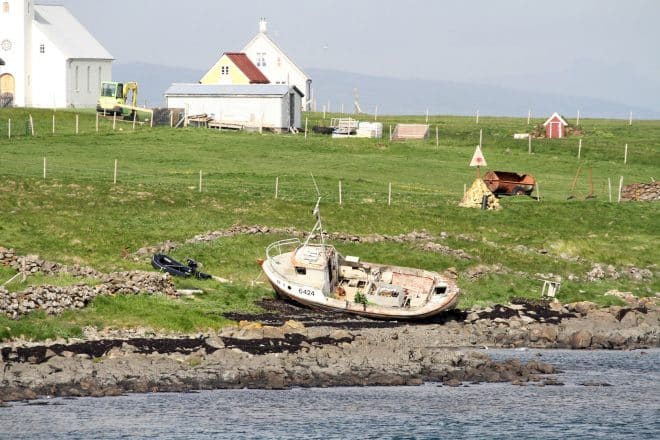
You see, it is not the pancake landscape, nor the homespun culture that acts as this island’s primary reason to visit, but many little things that culminate. As such, Flatey proves that the best things in life surprise you.
- Planning a trip? Be sure to read The 14 Best Things to Do in Iceland.
Within a day, I realised that Flatey might very well be one of my favourite locations in the whole Icelandic territory, and given the breadth of natural beauty to be found here, that statement should speak volumes for Flatey’s charms.
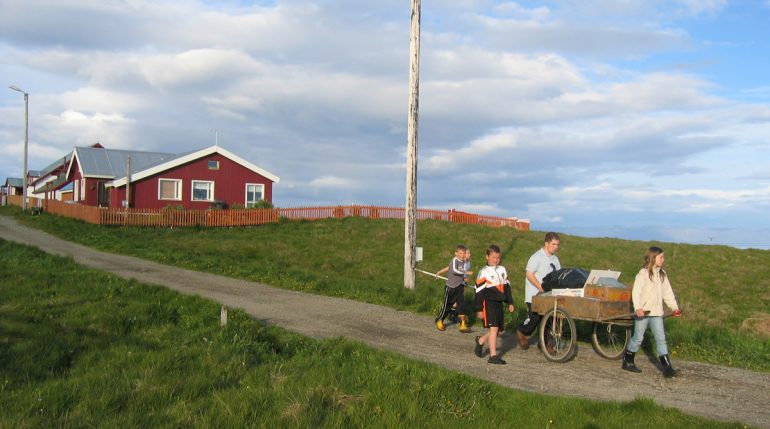
When it comes to infrastructure, expect a secluded seaside settlement devoid of pomp and novelty. Every building here has its use, from storing dried fish to sheltering the island’s sheep at night.
- Read our full guide on this West Iceland region here: Top Attractions & Activities on Iceland’s Snaefellsnes Peninsula
The only structure that offers much in the way of culture is Frystihúsið (The Freezer) Market, which hosts weekly entertainment nights only minutes from the island’s harbour.
Over pub quizzes or a round of Bingo, Frystihúsið sells drinks, snacks and souvenirs, including many handicraft ornaments lovingly built by Flatey residents.
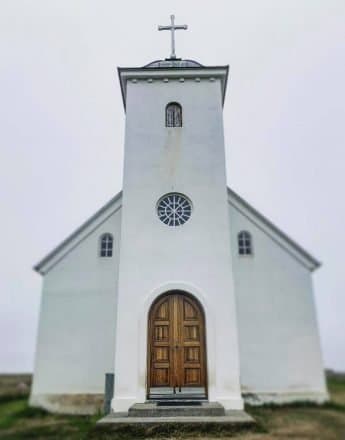
We could only go so long without mentioning Flatey’s very own Cathédrale Notre-Dame.
The newest version of Flatey’s church was built in 1926 and is largely known for the extravagant paintings of residents that decorate its boxy interior.
- Find the perfect Off the Beaten Path package for your Iceland holiday.
In exchange for free accommodation on the island, the artwork was done by Baltasar Samper, a Spanish painter and the father of Icelandic film director, Baltasar Kormakur.
(Funnily enough, many believe that Samper’s take on Jesus resembles his son a little too closely as to be a historically accurate interpretation of the Christian prophet.)
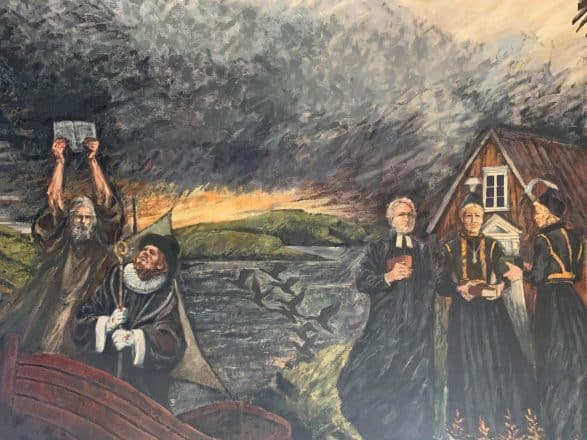
Though you wouldn’t think so, Flatey was once one of Iceland’s most important cultural and artistic centres, in large part thanks to its former monastery, tracing its roots to 1172 AD.
- Check out our feature article: What is the Golden Circle? – A Practical Guide to Iceland’s Most Popular Sightseeing Route
In 1777 AD, the Danish Crown issued a trading license to the island, which caused a boom in the number of people living and working on Flatey at any given time.
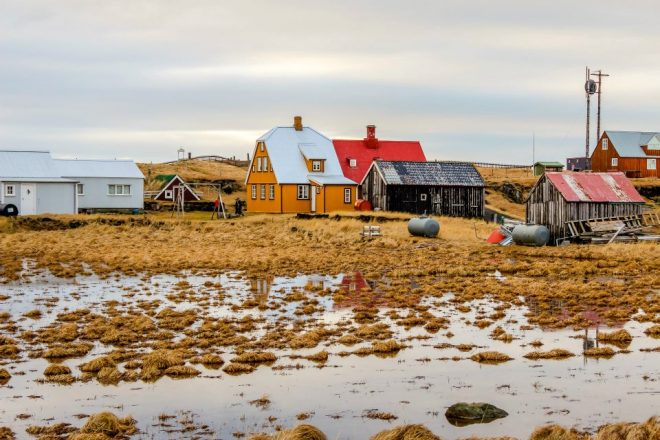
This overpopulation gently dwindled over the years as the values and employment prospects in society changed. Today, Flatey has only a seasonal populace, save for five year-round residents.
- Take a look at our exciting Northern Lights tours in Iceland.
History breathes through Flatey’s unkempt meadows, backwater bays and quaint architecture, and is as much a draw as anything else on the island.
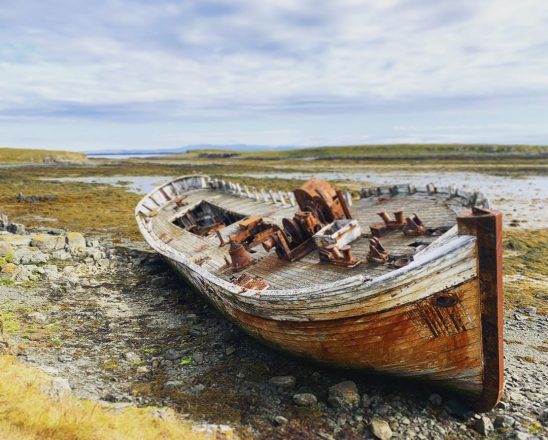
Almost everything appears, more or less, as it has done for hundreds of years, from the wooden fishing boats that line its small village beachhead, to the woolybacks that roam freely across the tundra.
- Don’t miss out on our wide selection of Day Tours and Activities in Iceland
Wreckage of former vessels that sit stranded on the sands only builds on this timelessness, which is as often as endearing as it can be unnerving.
Allow me to elaborate on that last part…
Spending the Night on Flatey Island
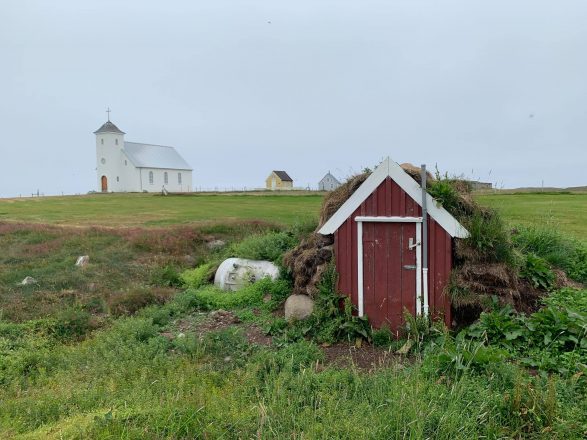
At night, the ocean winds blow heavily across the island.
Without hills to shield them, the houses take the full-brunt; their splintering window panes rattle uncontrollably, their wooden floorboards tremble and creak as though something is attempting to climb through the floor.
Suffice to say, it takes only a minute of restless sleep to realise why ghosts, ghouls and all things sinister seem a very real concept in Icelandic folklore.

In retrospect, it is the raw, lonesome and sometimes unsettling nature of staying overnight on Flatey that adds to it being such a memorable experience.
The whole island feels a little like this; so idyllic as to seem paranormal. It is a strange, yet compelling ambience that’s truly unique to this small Icelandic island, making it an exceptional getaway for travellers looking to experience remoteness in the wild.
- Check out other nearby attractions on this 10-Day Ring Road Road Trip | Self-Drive Tour of Golden Circle, South Iceland, Lake Myvatn & Snæfellsnes Peninsula
In an affected and all-knowing voice, I’ve actually been heard describing Flatey island as Lovecraftian to friends—and, in some cases, total strangers—and I stand by the parallel unashamedly.

Reminiscent of the pier sides from his most famous literary location, Innsmouth, one half expects mutated fish-men to lurch from the ocean, on the hunt for unwary tourists to join their ranks.
This is not beyond the realm of possibility in Flatey; a fear of sea monsters has been commonplace throughout the centuries.
For greater comfort and decent night’s sleep, I would recommend Hotel Flatey. Of course, that’s a given considering this modest accommodation is the only guesthouse on the island.
Try Flatey’s Signature Drink At The Salt Cellar
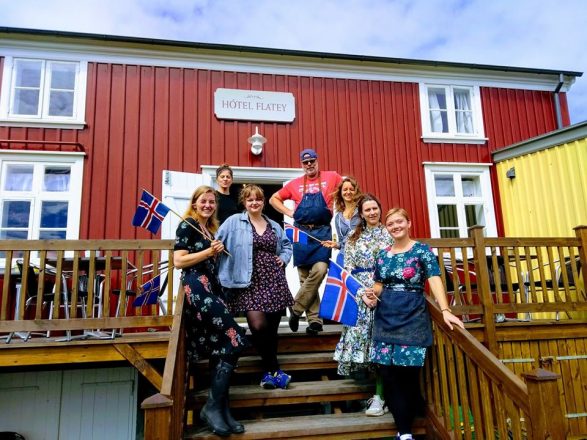
Not all one’s time on Flatey can be spent contemplating such things. Thankfully, there is a delicious little basement bar, The Salt Cellar, that provides an adequate distraction, serving drinks and bar snacks into the night.
Their take on the modern mojito—the Flahajito, naturally—is particularly worthy of recommendation, using local herbs to complement its gin and spritz.
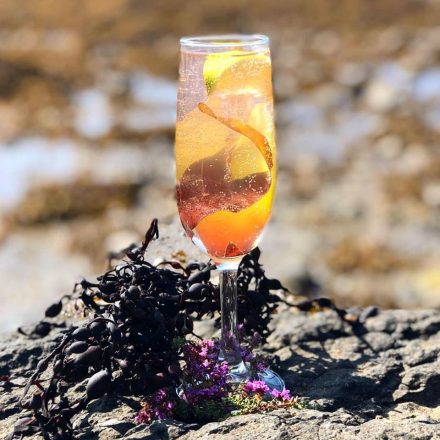
The bar is run by Hotel Flatey, who also operate a restaurant that’s made a name for itself with its fresh lamb and seafood dishes.
In short, visiting Flatey island should be considered a must-do for travellers spending any prolonged time in West Iceland. This is especially true for those seeking genuine remoteness in one of the finest and most undeveloped examples of Icelandic nature.
Make sure to include a stay on Flatey as part of your next stay in Iceland, and discover the quieter side of life here for yourself.
